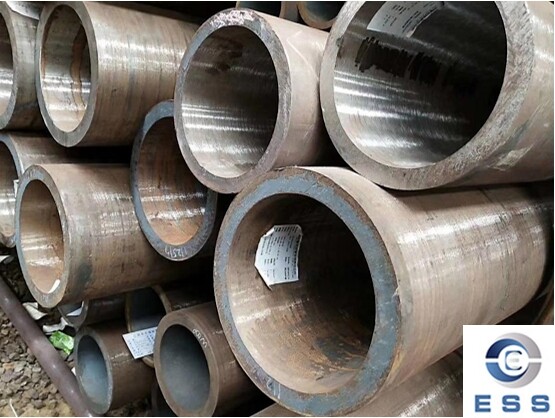
In the fields of industry and construction, seamless
steel pipe and welded
steel pipe are two common pipes. They have significant differences in
manufacturing process, strength, corrosion resistance and application
scenarios. So, which is stronger, seamless or welded?
Strength of seamless steel pipes
Seamless steel pipes are tubular products
made from a whole piece of metal material through processes such as
perforation, rolling or drawing. Since there is no weld, the material of
seamless steel pipes is more uniform, which makes them perform well when
subjected to high pressure, high temperature and complex stress environments.
The tensile strength of seamless steel pipes is usually more than 8-10 times
that of ordinary steel, so they are widely used in industries with high
strength requirements such as oil, natural gas, and chemicals.
Strength of welded steel pipes
Welded pipes are tubular products made by
welding steel plates or strips after curling and forming. Although modern
welding technology has been able to ensure that the quality of welds reaches a
high standard, under extreme conditions, the welds are still the weak link of
welded pipes. The national standard yield strength of welded steel pipes is
between 370MPa and 500MPa. Although this value is lower than the tensile
strength of seamless steel pipes, it is still sufficient for use in many
application scenarios.
Strength comparison and practical
application
Since seamless steel pipes do not have
defects such as welds and heat-affected zones during the manufacturing process,
their strength is generally higher than that of welded steel pipes.
1. Seamless steel pipes
The experimental results show that the
bearing capacity of seamless steel pipes of the same size is 20% to 25% higher
than that of welded steel pipes. This makes seamless steel pipes have a wider
range of applications under working conditions of high pressure, high
temperature and harsh environments. For example, in industries such as
petroleum, chemical, and electric power, key components such as boiler
tube often uses seamless steel pipe, which are favored for their high
strength and good corrosion resistance.
2. Welded steel pipes
In contrast, although welded steel pipes
have lower strength, their manufacturing cost is relatively low, and they still
have certain application value in some occasions where strength requirements
are not high. For example, in the construction field, welded steel pipes are
often used to build bridges and high-rise buildings; in the mechanical field,
they can be used to manufacture machinery and equipment, conveyor belts, etc.
Reasons for strength differences
This strength difference mainly stems from
the manufacturing process and material structure of the two.
1. Seamless steel pipe
Seamless steel pipe is a tubular metal
material made by hot rolling, cold drawing or cold rolling of solid round bars.
Its inner and outer walls are smooth and bright, without obvious short cracks,
ripples and other defects. This manufacturing process makes the material
structure of seamless steel pipes more compact and has higher safety and
reliability.
2. Welded steel pipe
Welded steel pipe is made by arc welding,
high-frequency welding and other welding methods after the steel plate is
curled into a tube. During the welding process, defects such as welds,
heat-affected zones and internal stress may occur, which will affect its
strength to a certain extent.
Summary and selection suggestions
In summary, there are obvious differences
in strength between seamless steel pipes and welded steel pipes. Seamless steel
pipes have a wider range of applications in harsh environments such as high
pressure and high temperature due to their high strength and good corrosion
resistance; while welded steel pipes are used in some occasions where strength
requirements are not high due to their economic advantages. When selecting
pipes, the advantages and disadvantages of both should be considered
comprehensively based on actual needs and the use environment.
Read more: Seamless Steel Pipe Sizes













 Eastern Steel Manufacturing Co.,Ltd not only improve product production and sales services, but also provide additional value-added services. As long as you need, we can complete your specific needs together.
Eastern Steel Manufacturing Co.,Ltd not only improve product production and sales services, but also provide additional value-added services. As long as you need, we can complete your specific needs together.










